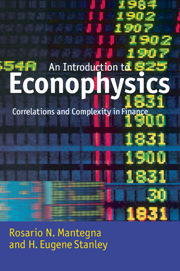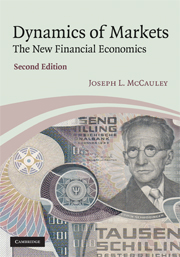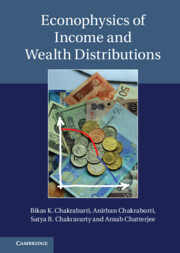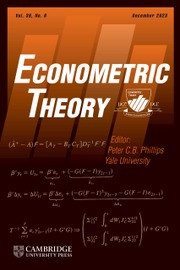Introduction to Econophysics
This book concerns the use of concepts from statistical physics in the description of financial systems. The authors illustrate the scaling concepts used in probability theory, critical phenomena, and fully developed turbulent fluids. These concepts are then applied to financial time series. The authors also present a stochastic model that displays several of the statistical properties observed in empirical data. Statistical physics concepts such as stochastic dynamics, short- and long-range correlations, self-similarity and scaling permit an understanding of the global behaviour of economic systems without first having to work out a detailed microscopic description of the system. Physicists will find the application of statistical physics concepts to economic systems interesting. Economists and workers in the financial world will find useful the presentation of empirical analysis methods and well-formulated theoretical tools that might help describe systems composed of a huge number of interacting subsystems.
- This book is on an important field of econophysics, which applies ideas from statistical physics to economics and finance
- Gene Stanley is a distinguished and very well-known physicist and author
- This work was highlighted in a page 1 article in the Wall Street Journal on November 6, 1998
Reviews & endorsements
'… they have been remarkably successful in presenting a clear and concise introductory summary of a large body of work on the statistical properties of stock prices.' Burton Malkiel, Journal of Economic Literature
'Clearly and concisely written, this book provides an excellent introduction to the problem of understanding the empirical statistical properties of prices.' Doyne Farmer, Prediction Company, Santa Fe and the Santa Fe Institute
'I feel the book is a useful introduction to the empirical aspects of econophysics.' Blake LeBaron, Nature
'The authors are leading researchers in the field, and were well-regarded statistical physicists before that … the book seems aimed the other way, at physicists interested in economics, and for them it would make a good introduction to finance. The writing is clear and friendly, the production values high and the guides to further reading excellent. They will find it well worth their time and money.' Cosma Shalizi, Institute of Physics
Product details
December 1999Hardback
9780521620086
162 pages
255 × 182 × 19 mm
0.5kg
63 b/w illus.
Available
Table of Contents
- Preface
- 1. Introduction
- 2. Efficient market hypothesis
- 3. Random walk
- 4. Lévy stochastic processes and limit theorems
- 5. Scales in financial data
- 6. Stationarity and time correlation
- 7. Time correlation in financial time series
- 8. Stochastic models of price dynamics
- 9. Scaling and its breakdown
- 10. ARCH and GARCH processes
- 11. Financial markets and turbulence
- 12. Correlation and anti-correlation between stocks
- 13. Taxonomy of a stock portfolio
- 14. Options in idealized markets
- 15. Options in real markets
- Appendix A: notation guide
- Appendix B: martingales
- References
- Index.







